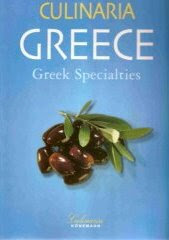
Today is a holiday in Melbourne, so I went back to bed with my coffee to finish off the last section of
Piri piri starfish. And. of course, then I wanted to cook something! I decided to start with one of the "basics", piri piri oil. There were a couple of reasons for that. Firstly, it seemed that almost every savoury recipe in the book called for some form of piri piri and piri piri oil was one of the many forms used. Second, I had a batch of chillies drying on the kitchen window ledge and there were also a few ripe ones left on the bush that had escaped my last culling. It seemed meant to be. And probably the last time this season that I would have the fresh chillies.

Tessa Kiros describes piri piri oil thus: " This is like a beautiful live fire. Use it here, use it there, use it just anywhere you love 'hot'.... A drop onto your rice, into prego rolls, over a soup ... even just a tiny drip will add a very different layer to your plate."
Another birthday present was some Red Rock Grampians olive oil infused with chilli and garlic. So that will form an interesting comparison though I am sure that the Grampians example will have a much milder impact as it has been infused and strained and doesn't have all the chilli flesh and seeds nestling in it.
I am not very good at sticking to recipes and this one was not to be an exception. I used the chillies from my garden but have no idea what the variety is. I used white wine vinegar not red as Tessa suggested: this was an accident as I pulled the wrong bottle down and noticed too late ;>). I didn't have the coarse salt used in Portugal so I used "normal" refined salt. Tessa didn't specify what kind of olive oil to use, so I used Greek olive oil as that is my favourite. With those differences, this recipe comes from her
Piri piri starfish.

Piri piri oil (adapted from Tessa Kiros,
Piri piri starfish: Portugal found).
Ingredients:3 fresh chillies, green stem removed & roughly chopped
6 dried chillies, green stem removed & roughly chopped
2 garlic cloves peeled
2 tablespoon whisky
1/2 teaspoon finely grated lemon zest
1 tablespoon lemon juice
1 tablespoon white wine vinegar
1 fresh bay leaf
1 teaspoon salt
1 cup olive oil
Method:
Using a mortar and pestle, mash the fresh and dry chillies and the garlic into a paste. Tessa says this should be about 2 tablespoon of chilli paste, though I didn't measure it.
Scrape the chilli paste into a small saucepan, add the whisky and turn the heat to low.
Add the lemon zest and juice, the vinegar, the bay leaf, salt and 2-3 tablespoons of the oil.
Let it bubble until it smells good.
Remove from the heat and whisk in the rest of the oil.
Pour into a sterilized jar and leave for a few days at least for the flavours to settle.
The oil will be hot at first but will settle and mellow.
You can add more olive oil to the mixture if you find it too strong after this.

Now I just need to put it aside and wait for a while for it to settle ;>). I enjoy making oils and vinegars and am wondering now whether I could use sambal oelek as a base for an oil, along with ginger and garlic. That is a combination I often use for a dressing, so maybe I will experiment with that next. Meanwhile, I wait.






